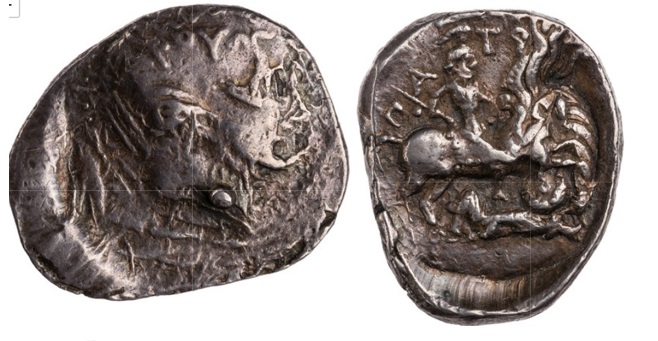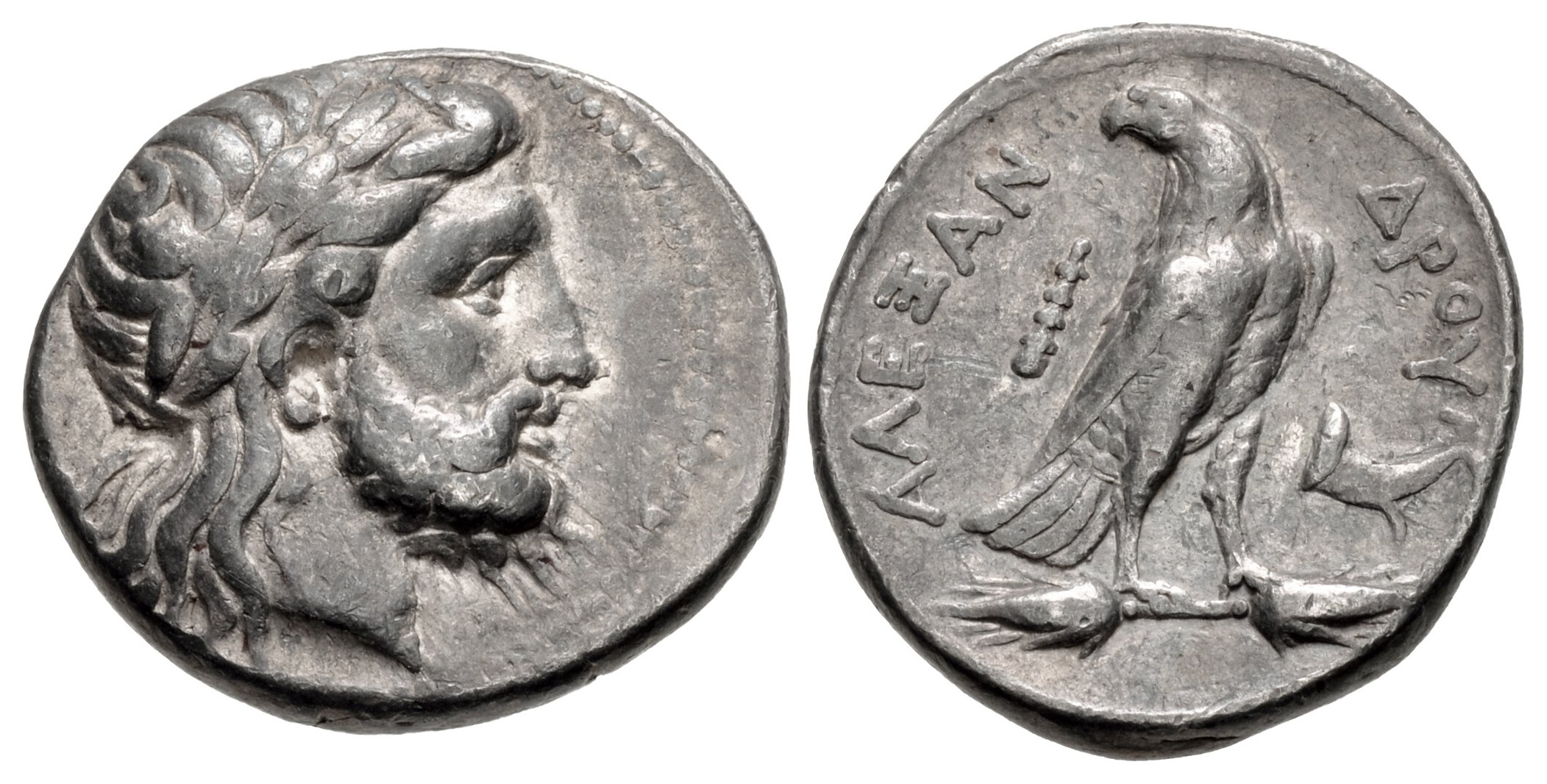329 BCE - 315 BCE | ΠΑΤΡΑΟΥ
Overstriking coin
Patraos 468 over Alexander ANS.jpg
[1]
Overstruck variety
Alexander the Great zeus eagle.jpg
[2]
Description
| ObverseInscription or printing placed on the obverse.:
|
Head of Apollo right, wearing laurel wreath.
|
ReverseInscription or printing placed on the reverse.:
|
ΠΑΤΡΑΟΥ (Greek) Paionian cavaleryman on horseback right, spearing Macedonian enemy lying below who defends himself with shield.
|
Mint and issuing power
Chronology
| FromIdentifies the initial date in a range assigned in a numismatic context. 329 BCE toIdentifies the final date in a range assigned in a numismatic context.. 315 BCE
|
Hellenistic 323-30 BC  periodTime period of the numismatic object. periodTime period of the numismatic object.
|
Physical description
MetalThe physical material (usually metal) from which an object is made.: Silver 
|
WeightWeight of the numismatic object (in grams). in grams: 12.4912.49 g <br />12,490 mg <br />
|
DenominationTerm indicating the value of a numismatic object. Examples: tetradrachm, chalkous, denarius.: tetradrachm 
|
AxisDescribes the directional relationship between the obverse and reverse of a numismatic object.: 1212 mm <br />1.2 cm <br />
|
|
|
StandardStandard.: Thraco-Macedonian
|
References
Description
| ObverseInscription or printing placed on the obverse.:
|
Head of Zeus right, wearing laurel wreath.
|
ReverseInscription or printing placed on the reverse.:
|
AΛΕΞΑΝΔΡΟΥ (Greek) Eagle right on thunderbolt, head left. In field, aplastron and bee?
|
Mint and issuing power
Chronology
| FromIdentifies the initial date in a range assigned in a numismatic context. 336 BCE toIdentifies the final date in a range assigned in a numismatic context.. 334 BCE
|
Classical 480-323 BC  periodTime period of the numismatic object. periodTime period of the numismatic object.
|
Physical description
| DenominationTerm indicating the value of a numismatic object. Examples: tetradrachm, chalkous, denarius. ᵖ:
|
tetradrachm 
|
StandardStandard. ᵖ:
|
Thraco-Macedonian
|
References

